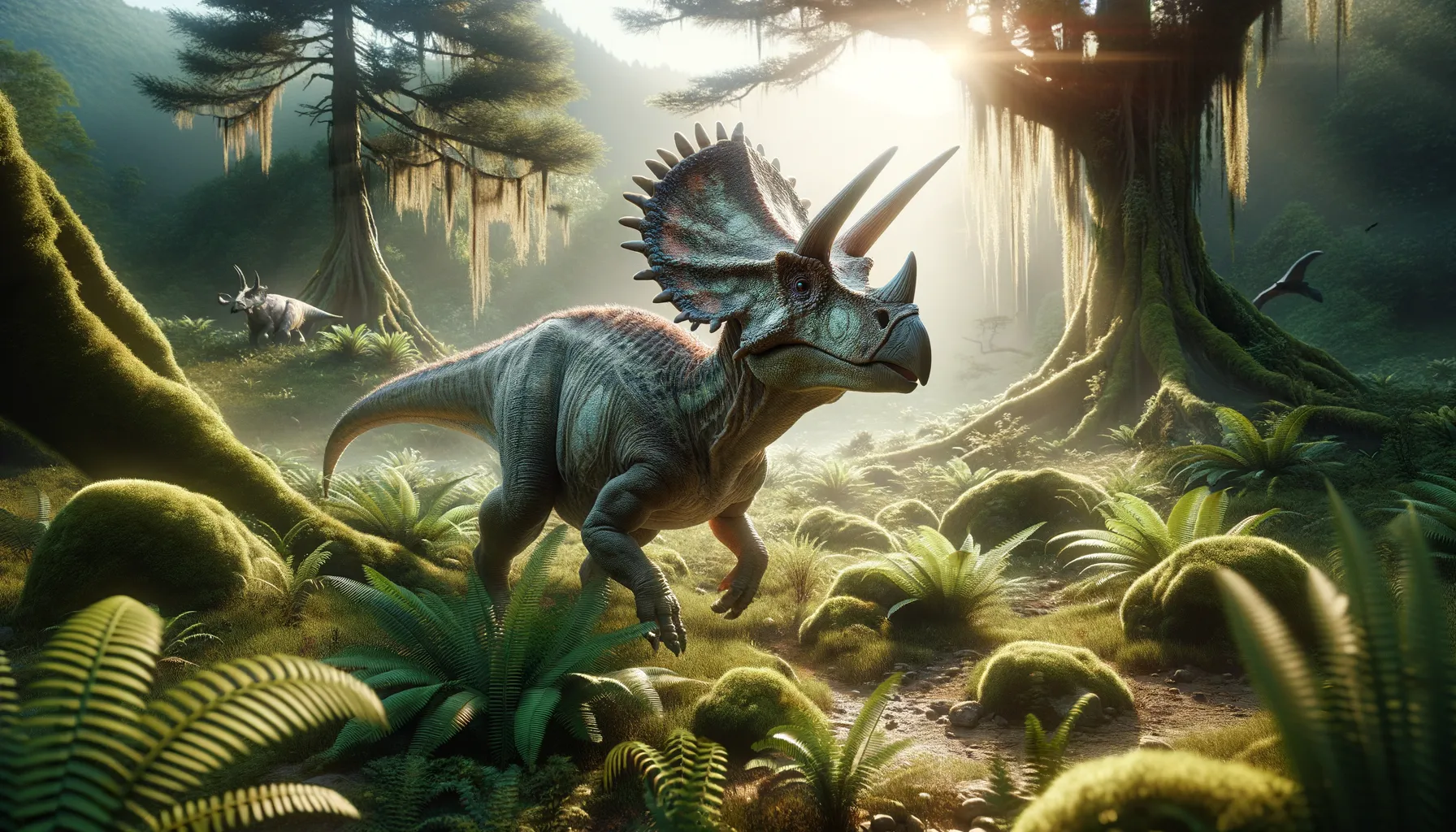
Cerasinops
Swift on its feet, grazes through time.
Period
Cretaceous
Length
About 2 meters long.
Height
Approximately 1 meter tall.
Weight
Around 40 kilograms.
Cerasinops is a small herbivorous dinosaur known from the Late Cretaceous period. It belonged to the ceratopsian group, which is often recognized by their beaks and frill structures. Unlike some of its larger relatives, Cerasinops was lightly built and likely relied on its swiftness and agility to navigate its environment. With a relatively smaller size, it thrived in the diverse ecosystems of what is now North America.
Diet
Cerasinops was primarily herbivorous, feeding on the abundant vegetation available during the Cretaceous period. Its beak-like mouth was well-suited for biting leaves and stems. It mostly grazed on low-lying plants, bushes, and possibly ferns.
Hunting
As a herbivore, Cerasinops did not engage in hunting behavior. It foraged for plants with other herbivorous dinosaurs. Its small size and agility helped it navigate dense vegetation to find food sources.
Environmental challenges
Cerasinops faced numerous environmental challenges, including the threat of larger predators. The changing climate conditions of the Late Cretaceous required adaptability. It also needed to navigate competition for food resources with other herbivores. At times, environmental events such as volcanic activity may have impacted its ecosystem.
Speed
Moderately fast, agile for its size.
Lifespan
Estimated at 20 to 30 years.
First discovery
First discovered in Montana, USA, 2007.
Fun Facts
- Cerasinops was a small dinosaur that lived approximately 75 million years ago during the Late Cretaceous period.
- This dinosaur is believed to have been herbivorous, meaning it primarily ate plants.
- Cerasinops belonged to the Ceratopsia group, which is known for its beaked face.
- It was a relatively small dinosaur, with scientists estimating it to be about the size of a sheep.
- Cerasinops fossils were first discovered in Montana, USA, which gave paleontologists an idea of its habitat.
- Unlike some of its larger relatives, Cerasinops did not have the large frills or horns associated with well-known ceratopsians like Triceratops.
- The name 'Cerasinops' means 'horned face,' reflecting its membership in the horned dinosaur family even though it lacked the dramatic horns.
Growth and Development
Cerasinops hatched from eggs, and initial growth would have been rapid to avoid predation. As it matured, it developed stronger limbs for swift movement and better foraging efficiency. The growth rate likely slowed as it reached adulthood, with size variation among individuals. Fossil evidence suggests various stages of development similar to other ceratopsians.
Habitat
Cerasinops inhabited forested regions with plentiful plant life. These areas had a warm, temperate climate suitable for the vegetation it fed on. Forests provided both food and protection from predators. The dinosaur also may have roamed open areas on the search for food.
Interaction with other species
Cerasinops likely encountered both predators and herbivores in its environment. Its interactions with other species were influenced by its size, speed, and adaptability. It may have formed herds for protection against predators. Additionally, Cerasinops coexisted with other small ceratopsians and had to compete for available resources.
Natural lifespan
In its natural habitat, Cerasinops could live up to 30 years.
Reproduction
Cerasinops reproduced by laying eggs in secure nests. The mating season would have been aligned with favorable environmental conditions. Parental care might have been present, which is suggested by nesting sites of similar species. The reproductive strategy focused on producing multiple offspring to ensure species survival.
Social behaviour
Cerasinops may have lived in small groups, providing safety in numbers. It possibly communicated through vocalizations and visual displays. Social structures might have included hierarchies to organize group movement. The sense of community helped protect against predators and aided in efficient foraging.
Fossil locations
Fossils of Cerasinops have been primarily found in North America, specifically in Montana. These findings have contributed significantly to understanding the variety of ceratopsian dinosaurs from the Late Cretaceous. The discovery of Cerasinops fossils provided insights into the diversity of ceratopsian species in different environments.
